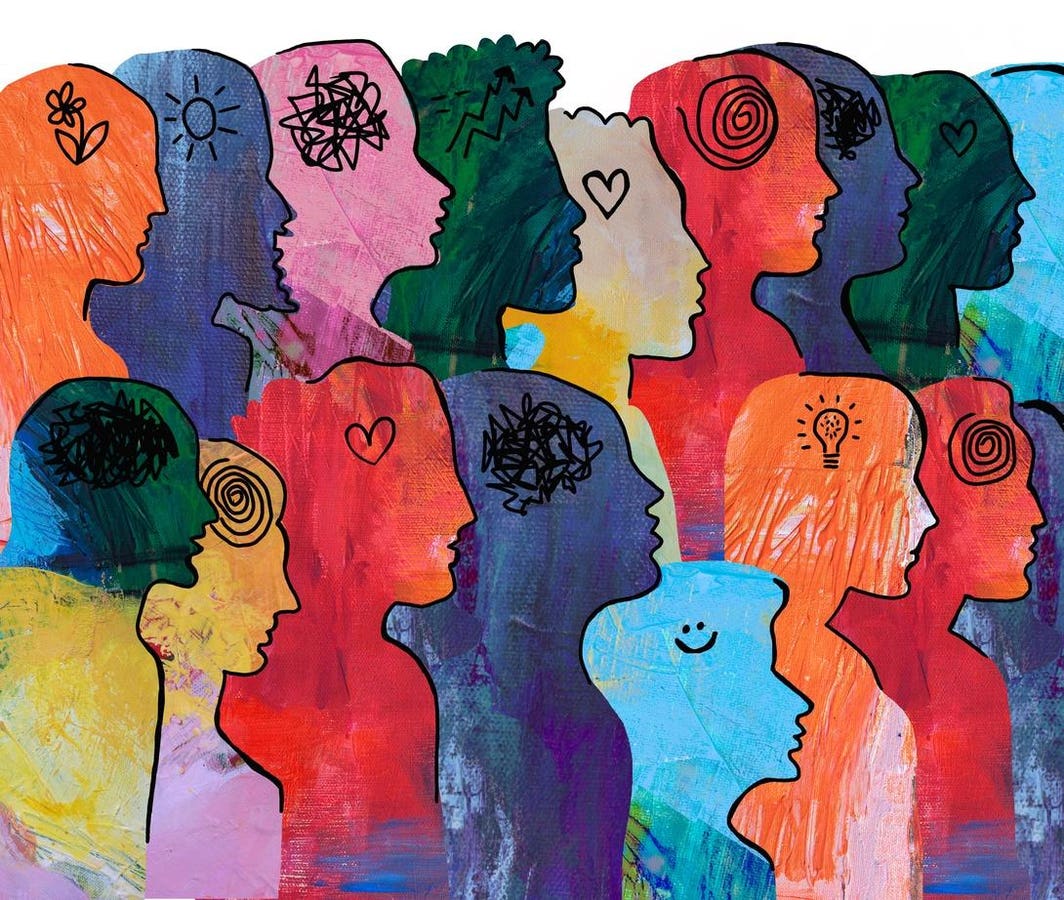Diversity and Inclusion (DEIA)
Trump’s Challenge to FAA’s Diversity Efforts

Dr. Lord-Marcelle’s Mother Earth juice bar is one of six new retail spaces at JFK Airport’s Terminal 8 run by local, women- and minority-owned entrepreneurs.
Unibail-Rodamco-Westfield, Donald Trump’s anger towards the Federal Aviation Administration and its diversity, equity, and inclusion (DEI) programs—which he linked, without any evidence, to a fatal collision between an American Airlines plane and an army helicopter—has wider implications for airport retailers.
DEI can add retail originality
The program has been central to retail concession awards at airports across the United States. Avolta’s Hudson and Dufry brands are among the most recent to win substantial retail concessions at New York’s John F. Kennedy—at the vast Terminal 6 project. In Hudson’s case, its decision to operate its travel convenience and specialty stores as a joint venture with three ACDBE partners would have helped its bid.
In December 2024, also at JFK, the Port Authority of New York and New Jersey, American Airlines, and Unibail-Rodamco-Westfield (URW) Airports, an operator of airport commercial programs, opened six new retail spaces at Terminal 8 run by small, local, women- and minority-owned entrepreneurs. These stores tend to offer more original products such as small-batch perfumes, locally sourced wellness products, hand-drawn illustrations, and New York honey.
Caught out by the speed of DEI clampdown
EOs 14151 and 14173 will undermine such collaborations if they have federal funding behind them. But even private DEI projects are in Trump’s firing line. The Airports Airport Minority Advisory Council (AMAC) has condemned the president’s decision to dismantle DEI programs.
AMAC’s Eboni Wimbush: “In reality, diversity, equity, and inclusion are essential for fostering … [+]
In a statement, the organization said the move “repeals decades-old policies to ensure equal opportunity and equity, such as EO 11246, which established equal employment opportunities for federal contractors, and EO 12898, which addressed environmental justice in minority and low-income communities.”
Airports’ Response
Airports are still seeking clarity on what will happen with DEI projects and possible ways around the EOs. Doug Yakel, a spokesperson for San Francisco Airport, told me: “It’s too early to assess any impact, but we remain committed.” In mid-January, the gateway joined Bay Area transportation agencies in signing a pledge to increase equity in infrastructure projects and “reduce the racial wealth gap.”
Conclusion
The future of DEI programs in airports is uncertain, but it is clear that the impact will be significant. The elimination of these programs could lead to a loss of diversity and originality in airport retail, as well as a decrease in opportunities for minority- and women-owned businesses.
FAQs
Q: What is the Airport Concession Disadvantaged Business Enterprise (ACDBE) program?
A: The ACDBE program is a federal program that provides opportunities for minority- and women-owned businesses to participate in airport retail concessions.
Q: What is the impact of the EOs on the ACDBE program?
A: The EOs could potentially eliminate the ACDBE program, which would likely lead to a decrease in opportunities for minority- and women-owned businesses to participate in airport retail concessions.
Q: What is the response of airports to the EOs?
A: Airports are still seeking clarity on what will happen with DEI projects and possible ways around the EOs. Some airports have expressed commitment to DEI programs, while others are seeking guidance from the FAA.
Diversity and Inclusion (DEIA)
Viral Clip Gets Right About Black Women And Repression

The History and Ongoing Reality of Reproductive Oppression of Black Women
The recent resurgence of a clip from Netflix’s #blackAF, featuring Rashida Jones’ character discussing the historical exploitation of Black women’s bodies for reproductive purposes, has sparked a heated debate. The monologue, which mentions that Black women were brought to America "to breed babies," has been criticized for its historical accuracy. However, historians acknowledge that enslaved Black women were indeed subjected to forced reproductive labor, a practice now recognized as reproductive oppression.
Enslavement and Reproductive Exploitation
During the period of slavery in the United States, enslaved Black women were forcibly impregnated and exploited for their reproductive labor. This was a critical component of the slave breeding industry, driven by the financial need for slave labor and the dehumanization of enslaved people. The regulation, exploitation, and monetization of individuals’ sexuality, labor, bodies, and procreative abilities to exercise control over individuals and communities, particularly those who are marginalized, is now referred to as reproductive oppression.
The Slave Breeding System
The sexual and reproductive exploitation of enslaved Black women was a direct result of their dehumanization and the denial of their fundamental rights as individuals. Enslavers encouraged and sometimes forced sexual relations between enslaved individuals to increase their holdings and ultimately, the profitability of enslaved people. Black women’s bodies were seen as a source of profit, and their reproductive capabilities were valued for the production of new enslaved people.
Ongoing Reproductive Oppression
Reproductive oppression did not stop after the emancipation of enslaved Black Americans. It has been the foundation of eugenics legislation that forcibly sterilized marginalized communities. Other examples of reproductive oppression include limiting access to contraception, discriminatory healthcare practices and bias, and mass incarceration, which currently impacts reproductive health and rights. Incarcerated women often face barriers to accessing reproductive healthcare and discrimination.
Recent Examples of Reproductive Oppression
A more recent example of reproductive oppression can be seen in the case of Adriana Smith, a 30-year-old nurse and mother who was declared brain-dead after suffering a medical emergency. At the time, Smith was nine weeks pregnant. Despite being declared brain dead, Emory University Hospital is keeping Smith’s organs functioning on life support until the fetus can be delivered due to Georgia’s law banning most abortions after fetal cardiac activity is detected or about six weeks into pregnancy. Smith is currently 22 weeks pregnant and has been on life support for more than 90 days. This has been a heart-wrenching and excruciating experience for Smith’s family, who simply wants the choice to act on Smith’s behalf in a way that they feel their loved one would have wanted.
Conclusion
The history and ongoing reality of reproductive oppression of Black women are complex and deeply rooted in the dehumanization and exploitation of enslaved people. As the current socio-political climate continues to change in the U.S., some fear the future of reproductive rights and the possibility of reproductive oppression being exercised in more overt and harmful ways, such as how Black women have been treated in the country for centuries.
FAQs
Q: What is reproductive oppression?
A: Reproductive oppression refers to the regulation, exploitation, and monetization of individuals’ sexuality, labor, bodies, and procreative abilities to exercise control over individuals and communities, particularly those who are marginalized.
Q: How were enslaved Black women exploited during the period of slavery in the United States?
A: Enslaved Black women were forcibly impregnated and exploited for their reproductive labor, which was a critical component of the slave breeding industry.
Q: Is reproductive oppression still a reality today?
A: Yes, reproductive oppression is still a reality today, with examples including limiting access to contraception, discriminatory healthcare practices and bias, and mass incarceration, which impacts reproductive health and rights.
Q: What is the current situation with Adriana Smith, and how does it relate to reproductive oppression?
A: Adriana Smith, a 30-year-old nurse and mother, was declared brain-dead after suffering a medical emergency while nine weeks pregnant. She is being kept on life support until the fetus can be delivered due to Georgia’s law banning most abortions after fetal cardiac activity is detected, highlighting the ongoing reality of reproductive oppression.
Diversity and Inclusion (DEIA)
Inclusive Marketing Isn’t Mandatory

Introduction to Inclusive Marketing
In recent years, several high-profile incidents have highlighted the importance of inclusive marketing. For instance, Vogue’s tribute to the iconic movie Hairspray, featuring model Gigi Hadid, was criticized for not including plus-sized individuals, who are a core part of the film. Similarly, Geno’s Steaks in Philadelphia faced backlash for posting a sign that said, "This is America. When ordering, please speak English." The Supreme Court’s ruling that a bakery in Denver could not be forced to create a wedding cake for a gay wedding also sparked controversy.
The Power to Choose
Brands have the power to choose who they want to serve and support. While there are laws such as the Americans With Disabilities Act and the Civil Rights Act of 1964, there are no laws that dictate what brands must do in terms of inclusivity. As a result, brands are not required to support Pride, offer larger sizes, or include people of color in their promotions or teams. Inclusive marketing is not a requirement or a mandate, and it doesn’t look like that will change in the near future.
The Business Case for Inclusive Marketing
However, inclusive marketing is just good marketing. Based on data, trends in the population, and consumer expectations, inclusive marketing is the future of marketing. When Fenty Beauty launched with 40 shades of makeup to accommodate people of different complexions, consumers proved with their wallets that this type of inclusion is what they wanted. The industry largely followed suit, making more shades available, because they saw that serving more consumers was needed to grow and stay relevant.
Consumer Response to Inclusive Marketing
Consumers are increasingly exercising their power to choose. Research shows that 82% of consumers want to buy from brands who share their values, and data shows that consumers are actively making choices to stop buying from brands who don’t share their values. Inclusion is an important value for many consumers, both for themselves and for others who are part of underrepresented and underserved communities. For instance, retailer Target has been under fire from consumers for scaling back its Pride merchandise and rolling back its commitments to diversity, equity, and inclusion. As a result, Target has seen declining sales, which they attribute to consumer boycotts.
The Impact of Exclusion
Choosing not to engage in inclusive marketing is a choice that brands have the right to make. However, brands also need to be prepared for groups of consumers to proactively choose to spend their money elsewhere as a result. Every day, consumers, particularly those from underrepresented and underserved communities, are choosing to spend their money with brands that are being intentional about serving them. For example, individuals with dietary restrictions, such as gluten-free diets, often choose to frequent restaurants that cater to their needs, demonstrating loyalty to brands that choose to serve them.
Conclusion
In conclusion, inclusive marketing is not a requirement, but it is a smart business decision. Brands have the power to choose who they want to serve, but consumers also have the power to choose where they want to spend their money. By choosing to engage in inclusive marketing, brands can tap into the growing demand for diversity and inclusion, and build loyalty with consumers who feel seen and valued.
FAQs
- Q: What is inclusive marketing?
A: Inclusive marketing refers to the practice of creating marketing campaigns and products that cater to diverse groups of people, including those with different racial and ethnic backgrounds, abilities, and identities. - Q: Why is inclusive marketing important?
A: Inclusive marketing is important because it allows brands to tap into the growing demand for diversity and inclusion, and build loyalty with consumers who feel seen and valued. - Q: Can brands be forced to engage in inclusive marketing?
A: No, brands cannot be forced to engage in inclusive marketing, but they can face backlash and declining sales if they choose not to. - Q: How can consumers promote inclusive marketing?
A: Consumers can promote inclusive marketing by choosing to spend their money with brands that prioritize diversity and inclusion, and by speaking out against brands that do not.
Diversity and Inclusion (DEIA)
Prioritizing Mental Health Awareness

Mental Health Awareness Month: A Priority for Inclusive Leaders
How many know that Mental Health Awareness Month originated in 1949 by the National Mental Health Association(now Mental Health America)? It started as a week but extended to a month, designed to provide awareness and resources to support mental health. Some 76 years later, we, as a nation as well as workplaces, remain challenged by how to care for and help those with mental health challenges. Consider the many told and untold stories about leaders succumbing to workplace pressures. Conversely, some struggle without care, which causes behavioral outbursts that can impact or harm others. This month provides an opportunity for inclusive leaders to not only reflect and care for their mental well-being but also to educate and raise awareness about integration for those who struggle with mental illnesses in the workplace. This article will highlight how mental health impacts the workplace and provide strategies inclusive leaders can leverage to gain support as they navigate the requirements for a truly inclusive workplace.
Defining Mental Health
According to The World Health Organization, mental health disorders include anxiety, depression, bipolar disorder, schizophrenia, neurodevelopmental disorders, and more. The 2025 Work in America Survey cites 82% of workers who say the workplace environment moderately or drastically negatively impacts their mental health. Additionally, 70% report increased stressors around job security amidst policy and economic changes. Mental health is also a concern across generations. A Deloitte Study says Gen Z (39%) and Millennials (33%) are concerned about mental health. These statistics indicate that mental health is a core topic that deserves attention as we strive to create welcoming, productive, and innovative workplaces. Mental health is a priority because of its proximity and impact on the workplace.
The Impact of Mental Health on the Workplace
Employees impacted by mental health can be challenged with work assignments, team dynamics, and communicating values. Equally, leaders can struggle to provide adequate support for those who identify as having mental health issues that require accommodation. Research says several factors can be the cause: inadequate workplace culture, availability of mental health resources, and requisite knowledge from responsible stakeholders.
Strategies for Inclusive Leaders to Support Mental Well-Being
The world at large carries many challenges, and inclusive leaders must be well-equipped to deal with challenges that come their way on an ongoing basis. A while back, I wrote an article about Simone Biles and how she had to prioritize her mental health as she navigated the pressures around leadership and winning in the Olympics. She decided to exit the Olympics and focus on strengthening her mental well-being. A decision that won her praise and changed her career trajectory as she became an ambassador for mental health. Inclusive Leaders, similarly, can face a great deal of pressure around getting inclusion right in the workplace. Consider how many dimensions of diversity make up the workplace and the pressure to be inclusive. Since we’re talking about mental health awareness month, let’s acknowledge the many complexities involved in better understanding disorders in that space. This is a large task for those who strive to be inclusive leaders.
Olympic Champion and Mental Health Ambassador Simone Biles proves prioritizing mental health is a winning strategy.
Below are four strategies to help inclusive leaders care for their mental well-being while on the transformative leadership journey.
- Find a therapist to support leadership transformation while allowing for the unpacking of inclusion challenges. As an example, let’s revisit the Simone Biles piece. She validated the effectiveness of having scripts from her therapists to deal with pressure-packed situations. Inclusive leaders should note that therapists can help create a robust toolkit for workplace challenges.
- Leaders should invest adequate time appreciating their unique values. Know when the inclusion tank is low and when to step aside for rejuvenation. This could include time away from the office and connecting in feel-good situations.
- Create a supportive community that can be an outlet when those challenging moments threaten mental well-being.
- Practice the ability to speak and share authentically. Track progress. Oftentimes, when we go inward and experience an overwhelming message that isn’t released appropriately, there can be health ramifications.
Conclusion
Mental health awareness is crucial for creating a welcoming and productive workplace. Inclusive leaders must prioritize their mental well-being and provide support for their employees. By understanding the impact of mental health on the workplace and implementing strategies to support mental well-being, leaders can create a positive and inclusive work environment. As we continue to navigate the complexities of mental health, it is essential to remember that mental health is a priority, and it requires attention and care from all of us.
Frequently Asked Questions (FAQs)
Q: What is Mental Health Awareness Month?
A: Mental Health Awareness Month is a month-long awareness campaign that originated in 1949 to provide awareness and resources to support mental health.
Q: How does mental health impact the workplace?
A: Mental health can impact the workplace by affecting employees’ ability to complete work assignments, interact with team members, and communicate values. It can also impact leaders’ ability to provide adequate support for employees with mental health issues.
Q: What strategies can inclusive leaders use to support mental well-being?
A: Inclusive leaders can use strategies such as finding a therapist, investing time in self-care, creating a supportive community, and practicing authentic communication to support their mental well-being.
-

 Career Advice6 months ago
Career Advice6 months agoInterview with Dr. Kristy K. Taylor, WORxK Global News Magazine Founder
-

 Diversity and Inclusion (DEIA)6 months ago
Diversity and Inclusion (DEIA)6 months agoSarah Herrlinger Talks AirPods Pro Hearing Aid
-

 Career Advice6 months ago
Career Advice6 months agoNetWork Your Way to Success: Top Tips for Maximizing Your Professional Network
-

 Changemaker Interviews5 months ago
Changemaker Interviews5 months agoUnlocking Human Potential: Kim Groshek’s Journey to Transforming Leadership and Stress Resilience
-

 Diversity and Inclusion (DEIA)6 months ago
Diversity and Inclusion (DEIA)6 months agoThe Power of Belonging: Why Feeling Accepted Matters in the Workplace
-

 Global Trends and Politics6 months ago
Global Trends and Politics6 months agoHealth-care stocks fall after Warren PBM bill, Brian Thompson shooting
-

 Global Trends and Politics6 months ago
Global Trends and Politics6 months agoUnionization Goes Mainstream: How the Changing Workforce is Driving Demand for Collective Bargaining
-

 Training and Development6 months ago
Training and Development6 months agoLevel Up: How Upskilling Can Help You Stay Ahead of the Curve in a Rapidly Changing Industry





















